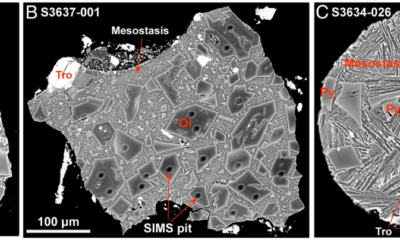Science
Researchers Unveil Advanced Carbon Dioxide Energy Storage System

Researchers at the Technical Institute of Physics and Chemistry, part of the Chinese Academy of Sciences, have made significant strides in energy storage technology with the development of a new carbon dioxide energy storage (CES) system. This innovative system features a high-temperature graded heat storage structure, which enhances efficiency and offers a standardized method for optimizing CES systems. The findings were published in the journal Frontiers in Energy.
Energy storage is vital for balancing supply and demand in renewable energy systems. Traditional CES systems often rely on low to medium temperature thermal storage units, which can limit their efficiency and usability. The newly introduced CES system employs a high-temperature graded heat storage design that utilizes multiple heat exchange fluids. This breakthrough optimizes heat transfer performance, leading to a significant increase in cycle efficiency.
Under typical design conditions, the CES system demonstrated a remarkable round-trip efficiency of 76.4% and achieved an output power of 334 kW/(kg·s ‒1 ) per unit mass flow rate. The research team identified several factors that could further enhance this efficiency, including increasing the total pressure ratio, reducing heat transfer temperature differences, improving heat exchanger efficiency, and lowering ambient temperatures.
Innovative Modeling Techniques Enhance Reliability
To assess the performance of the CES system, the researchers employed advanced mathematical modeling techniques. This approach allowed them to simulate various operational conditions and configurations, ensuring the reliability and robustness of their results. The study emphasizes that this method not only provides a detailed performance analysis but also serves as a framework for future optimizations in CES system design.
The potential applications for this technology are vast, especially in renewable energy systems that demand efficient and flexible storage solutions. By introducing a thermodynamic intrinsic cycle construction method and performance prediction evaluation, the researchers have established a universal framework that could shape future innovations and policies within the energy sector. Their work was supported by the National Natural Technology Development in China.
Future research will focus on scaling this technology for industrial applications and exploring its integration with other renewable energy systems. The full details of this groundbreaking study can be accessed in Frontiers in Energy at the following link: https://journal.hep.com.cn/fie/EN/10.1007/s11708-025-0995-3.
This development marks a significant leap in energy storage technology, positioning it as a crucial element in the transition towards sustainable energy solutions.
-

 Technology5 months ago
Technology5 months agoDiscover the Top 10 Calorie Counting Apps of 2025
-

 Technology2 weeks ago
Technology2 weeks agoOpenAI to Implement Age Verification for ChatGPT by December 2025
-

 Health3 months ago
Health3 months agoBella Hadid Shares Health Update After Treatment for Lyme Disease
-

 Health3 months ago
Health3 months agoAnalysts Project Stronger Growth for Apple’s iPhone 17 Lineup
-

 Health3 months ago
Health3 months agoErin Bates Shares Recovery Update Following Sepsis Complications
-

 Technology5 months ago
Technology5 months agoDiscover How to Reverse Image Search Using ChatGPT Effortlessly
-

 Technology3 months ago
Technology3 months agoElectric Moto Influencer Surronster Arrested in Tijuana
-

 Technology2 months ago
Technology2 months agoDiscover 2025’s Top GPUs for Exceptional 4K Gaming Performance
-

 Technology5 months ago
Technology5 months agoMeta Initiates $60B AI Data Center Expansion, Starting in Ohio
-

 Technology5 months ago
Technology5 months agoRecovering a Suspended TikTok Account: A Step-by-Step Guide
-

 Health5 months ago
Health5 months agoTested: Rab Firewall Mountain Jacket Survives Harsh Conditions
-

 Lifestyle5 months ago
Lifestyle5 months agoBelton Family Reunites After Daughter Survives Hill Country Floods





















